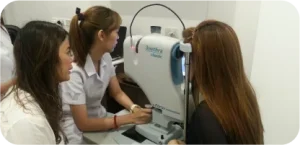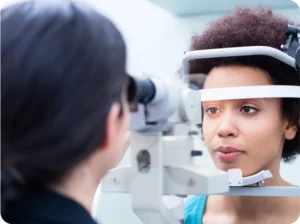In today’s technology-driven world, employees often spend hours staring at screens, whether it’s computers, smartphones, or other devices. This prolonged screen time can lead to digital eye strain, causing discomfort, reduced productivity, and even long-term vision issues. As an employer, prioritizing your employees’ eye health is a meaningful way to demonstrate care while fostering a healthier and more efficient workplace.
Organizing workplace eye checkups is a simple yet impactful strategy to address these challenges. By providing your employees with access to professional eye care, you can improve their well-being and contribute to the overall success of your organization.
Why Eye Health Is Critical for Employees
Vision is essential for most workplace tasks, particularly in office environments dominated by screen usage. Here are some common eye-related issues employees face:
Digital Eye Strain: Symptoms include dry eyes, headaches, blurred vision, and neck or shoulder pain caused by prolonged screen exposure.
Undiagnosed Vision Problems: Many employees may be unaware of underlying issues such as nearsightedness or farsightedness, which can affect their productivity.
Chronic Conditions: Eye diseases like glaucoma or cataracts often develop without noticeable symptoms but can be detected early through regular checkups.
Benefits of Workplace Eye Checkups

Enhanced Productivity:
Employees with corrected vision can focus better and work more efficiently. Eye discomfort and vision issues often lead to distractions, errors, and frequent breaks. Regular eye checkups ensure employees have the necessary tools, such as glasses or contact lenses, to perform their tasks comfortably.
Early Detection of Health Issues:
Eye exams can reveal more than vision problems. They can also detect signs of systemic health conditions like diabetes, hypertension, and certain neurological disorders, allowing employees to seek early treatment.
Increased Employee Satisfaction:
Providing eye checkups shows that you value your employees’ well-being. This can boost morale, job satisfaction, and loyalty, fostering a positive workplace culture.
Reduced Absenteeism:
Unaddressed vision problems can lead to health complications and missed workdays. Regular checkups can prevent such issues, ensuring employees remain healthy and present.
Steps to Organize an Eye Checkup Camp
- Partner with Experts: Collaborate with trusted eye care providers or equipment manufacturers to bring professional services to your workplace.
- Plan the Event: Choose a convenient date and set up a suitable space for the checkups. Ensure the location is well-lit and comfortable.
- Communicate with Employees: Inform your employees about the event, highlighting the benefits and encouraging participation.
- Follow Up: Provide employees with their results and recommendations for further action, such as visiting an optometrist or obtaining corrective eyewear.
The Role of Eye Health Equipment Manufacturers
Eye health equipment manufacturers play a crucial role in workplace wellness initiatives. Their advanced tools, such as digital refractors and retinal imaging systems, enable accurate and efficient diagnostics. Partnering with these manufacturers ensures your employees receive high-quality care, reflecting positively on your organization.
Conclusion
Workplace eye checkups are a valuable investment in your employees’ health and productivity. They not only address immediate vision concerns but also help detect broader health issues early. By prioritizing eye health, you demonstrate your commitment to employee well-being while fostering a healthier, more productive workplace.









